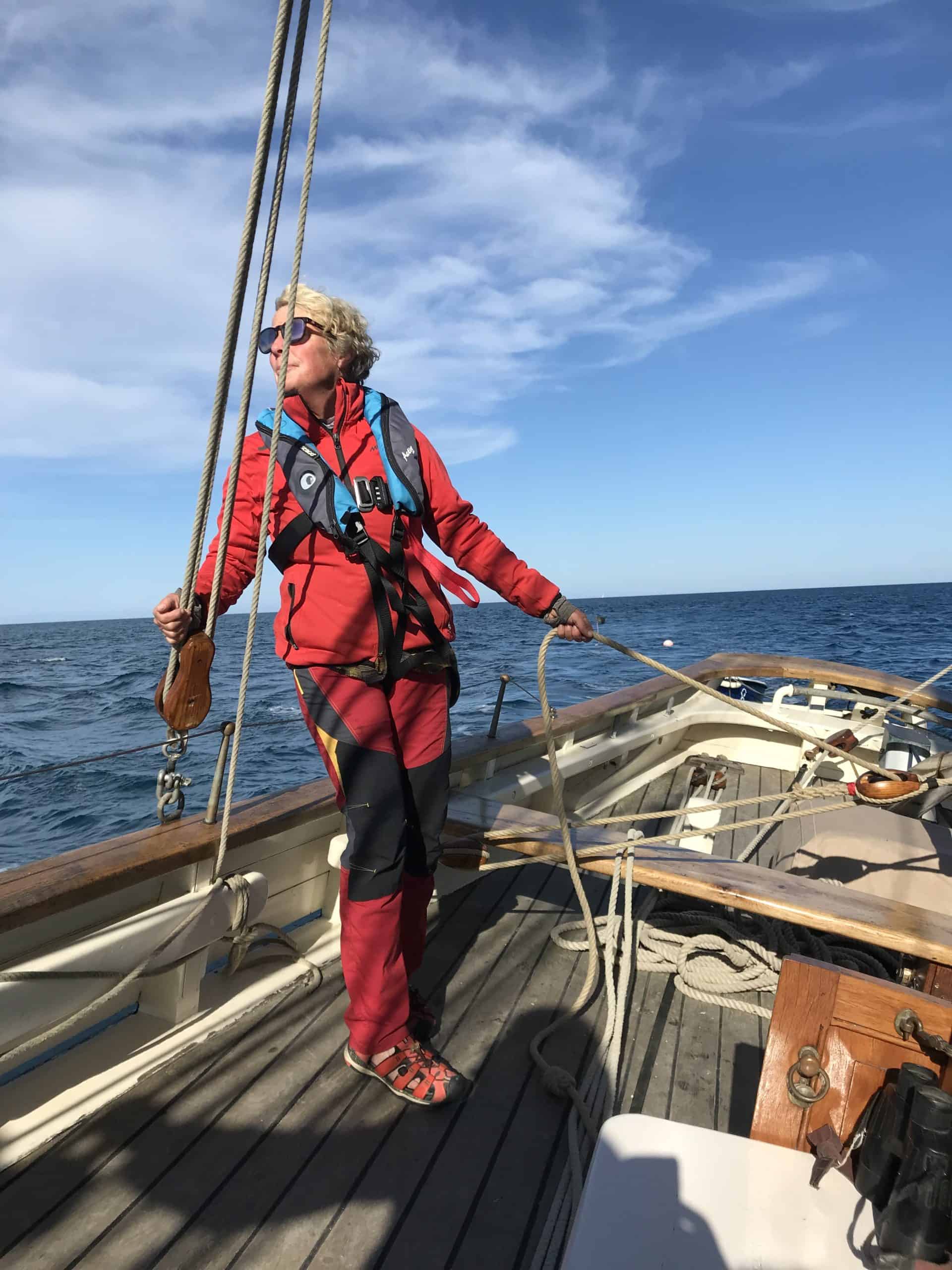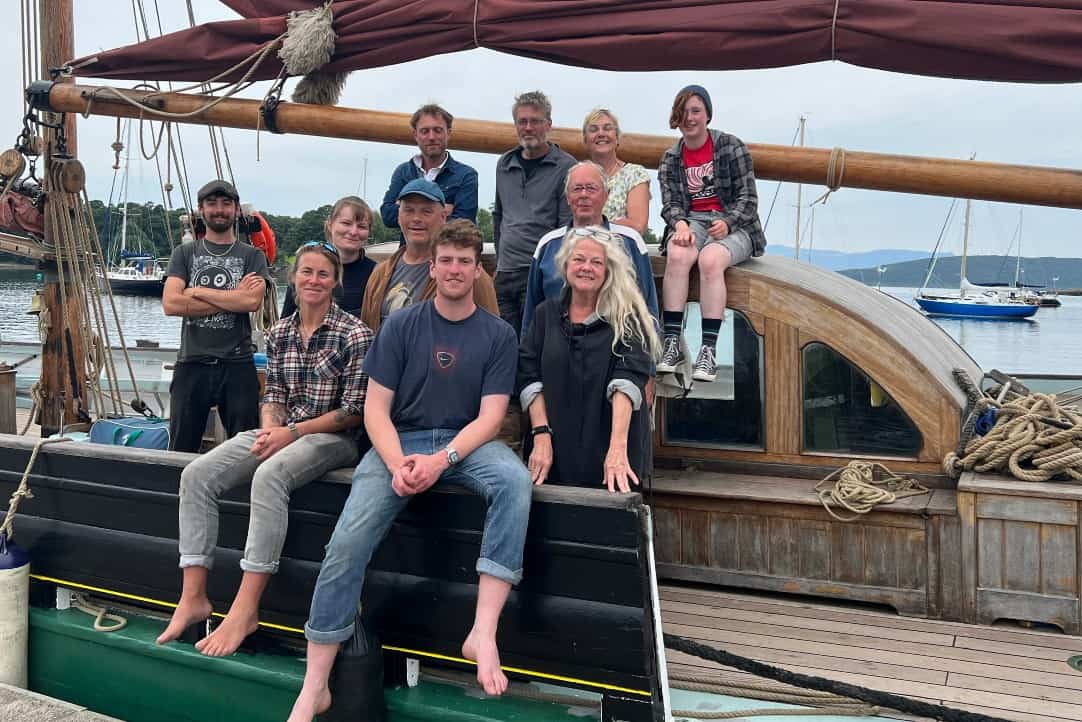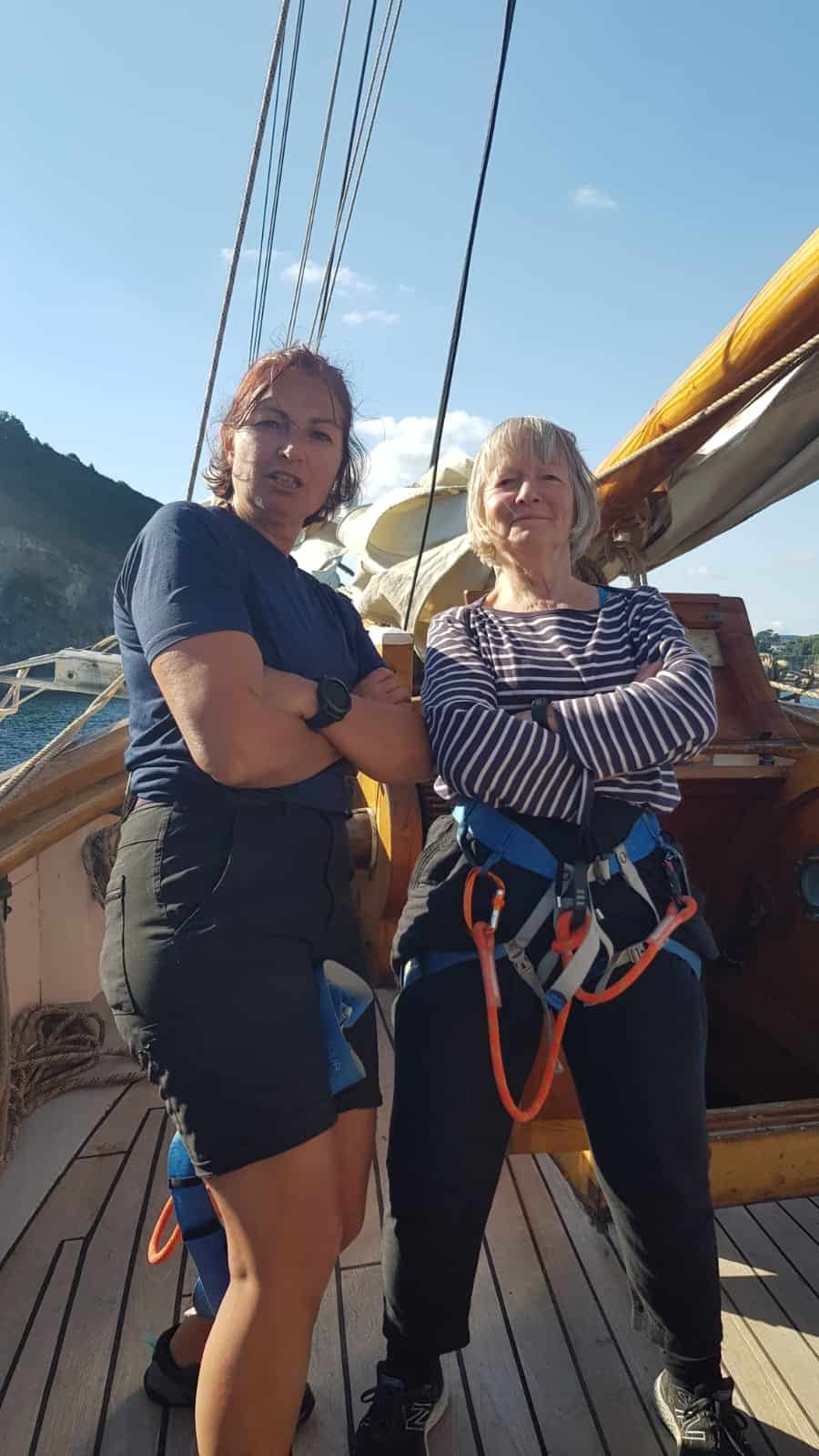I was once asked to do an interview in which I would have to espouse the struggles and achievements of my time as a ‘Woman at Sea’. While the proposer had the best intentions with the piece, it made me cringe. I consider myself a ‘Seafarer’ (a handily gender-neutral term), and the telling of anecdotes highlighting my sex smacks (to me) of a ‘despite the fact’ attitude. I climbed that mast, despite the fact… I hauled that line, despite the fact… I stowed that sail, despite the fact… There’s a hidden bias in there which suggests that what I have between my legs should somehow be holding me back, and aren’t I clever for overcoming the hurdles of my sex and gender to get ahead in a man’s world…
…which is a load of tosh, of course. While seafaring has historically been male dominated (as have most professions), women have always gone to sea. Look at Mary Patten the skipper’s wife who, in 1856, commanded the clipper ‘Neptune’s Car’ round Cape Horn, dealt with a dying husband and mutinous crew and got the ship safely to San Francisco. She also happened to be four months pregnant (which some history books love to highlight, almost as proof, if we needed it, that she was a woman). But Mary Patten didn’t manage this because (or despite the fact that) she was a woman. She did it because she was Mary Patten.



There are countless others, of course; from 9th century Viking captain Aud (‘The Deep Minded’), Ching Shih, commander of a Chinese pirate fleet in the early 1800s, right up to Tracy Edwards and the 1989 crew of Maiden. Whatever the era, you tend to find it’s not the women themselves who think they are unusual, rather its the history-writers and journalists who like to make a big deal of their gender.
What all this boils down to, really, is that all sorts of everyone can go to sea and if you want to, you should.
I’m not denying, however, that it can feel intimidating. Especially if you’re travelling solo. A new ship is a small, unexplored world- you need to know that the atmosphere is going to be habitable. So here are some questions answered and a few pieces of advice for those keen to bring out their inner Mary Patten (whatever their gender):
Will there be anyone else like me on board?
The ships in the Classic Sailing Fleet come in all shapes and sizes, and so do their crews. There could be anything from 3 or 4 to 50 other people on your voyage. We have a lot of solo travellers booking trips, and what they all have in common is a desire to do something different and be part of the crew during their time on board. This is a great leveller: whatever everyone’s backgrounds you all have the same goals: to get the wind in your hair, have fun and learn something.
Some boats offer all-female voyages, which can be a brilliant starter for anyone particularly concerned about sailing in a safe social space, but sailors of any gender and any level of experience are made welcome on all Classic Sailing trips.



Will I have any privacy?
Accommodation spaces are as varied as the fleet itself. Bunks are sometimes in their own private area: Mascotte, for instance, has a private single cabin, and there are many twin cabins available (see Johanna Lucretia, Eye of the Wind and Oosterschelde, for example). If privacy is a concern, it is often possible to book a twin cabin for sole occupancy, at a discounted rate to the 2-person price.
In larger shared cabins, there are privacy curtains on the bunks, and sleeping areas are kept single-gender unless otherwise specified.
The biggest thing to bear in mind regarding privacy on board is that everyone is literally in the same boat. This garners an atmosphere of mutual respect and politeness, an atmosphere that is encouraged by the professional crew.
Is sailing not misogynistic?
There are misogynists in every walk of life, sadly, and this is also true in the sailing world. There is also a great deal of loveliness, however, and that’s what we like. While we can’t filter people according to their ‘isms’, we do encourage an open and accepting attitude, and the ships we work with do the same.
There is sometimes a misguided belief that traditional sailing has to be a macho game. This couldn’t be further from the truth. A well-run ship is a friendly and welcoming place, and works on the understanding that everyone has something to bring to the team, and that having a good variety of people makes for the best crew and the most fun. Vive la difference!
It’s also important to remember that a ship is not a democracy, nor is it a pissing match. The skipper’s word is final. While the vast majority of the time this authority is wielded with such a light touch as to be almost invisible, it does mean that anyone who’s on board to show off or feel superior is quickly brought down to size. This might sound a bit harsh, but it’s one of the highlights of sailing, as any hint of machismo is given short shrift.



Is physical strength required?
Traditional sailing can be hard work- there are sails to set and very few winches, after all. However hoisting a sail is more about technique than brute force: using the mechanical advantage of blocks and tackles, and getting into the groove of ‘sweating and tailing’ a line in a way that makes the most of every movement. The 10 stone woman in her 60s can often set a sail quicker than the 20-something body builder. Mostly because she relaxes in the knowledge that it’s not a competition.
If you’re not able to get involved in hauling lines, you will still be a valued member of the team. There’s so much more to sailing than the literal pulling of weight; you might find your niche steering, keeping lookout or making everyone laugh. All equally important.
What can I do if I feel uncomfortable on board?
Kept bottled up, negative feelings can lead to a tricky atmosphere on board, as well as detract from your enjoyment. It’s always best to talk about them. A good first step is a quiet word with a member of the professional crew. They will have seen all sorts during their time on board and its doubtful that anything you say will surprise them. There is nearly always a possible resolution, and even if this is difficult in the time available, you will at the very least have someone to talk to, confide in and laugh with.
The other side of this, and equally important, is to be mindful of other people’s feelings too. Err on the side of compassion, always, and be respectful of the whole smorgasbord of views and backgrounds, even if you don’t agree with them. You never know, you could end up with a friend on the other side of some political divide or other, and that can only be a good thing.
Where do I start?
Have a look through the wide range of sailing trips on offer Your big adventure doesn’t have to be a trans-ocean epic (although it might be!), it could be a day-sail or a weekend of coastal wandering. It’s about finding something that will help you push your own limits a bit. This will leave you feeling strong, capable, windswept and adventurous.
Trust me, I’m a seafarer.




